A series of delightful watercolours by surveyor William Spearman Young add interest to Julius von Haast’s rather more serious account of an 1863 journey over the pass that now bears his name.
Born in Germany, Haast became Canterbury Provincial Geologist in 1861 and founded Canterbury Museum in 1867. Visitors to the Museum can appreciate the results of his vision and see a recreation of Haast’s office and early displays in the Victorian Museum on Level 1.
The exploring party that set out from the head of Lake Wanaka on 22 January 1863 comprised Haast, surveyor W S Young, Robert Langley Holmes (who later worked at Canterbury Museum), William Francis Warner (later of Warner’s Hotel in Christchurch) and Charles Haring (also known as Charlie Williams).
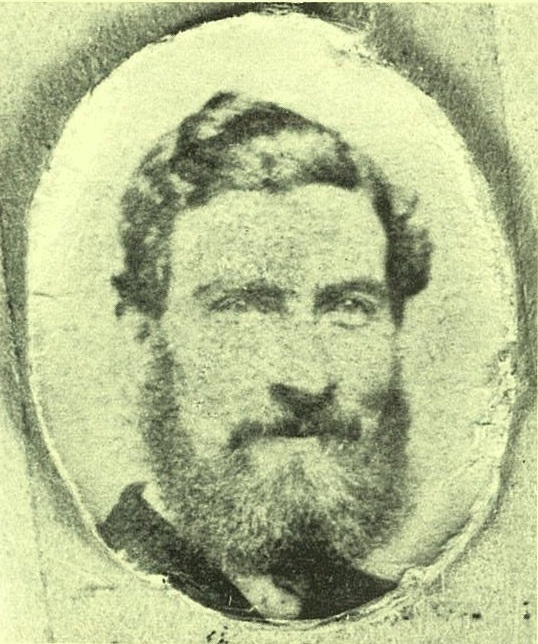
The group spent four difficult weeks crossing the Southern Alps and another two retracing their steps to Lake Wanaka. The expedition was hailed as the first to discover Tioripatea (Haast Pass), despite it being a route well-known to Māori. The discovery of the pass was contested by Charles Cameron who had travelled to the pass a week or so earlier, but both were beaten by John Holland Baker and a Mr E Owen who, looking for sheep country, reached Haast Pass in April 1861. Climbing a tree on the saddle and seeing only endless forest they retraced their steps and thought no more about it. Haast and his men believed that they were the ‘first’ and vigorously argued with anyone who said otherwise.
Haast and party were, however, the first to complete a scientific expedition over Tioripatea. The group collected bird-skins, geological specimens and 58 botanical specimens, some previously undescribed, which Haast sent to Dr J D Hooker at Royal Botanic Gardens, Kew in London.
Paintings made by Young, the surveyor, were another important record of the journey. In 1890 he sent them to his expedition companion William Warner of Christchurch along with a light-hearted description of each scene. This generous deed ensured the survival of the paintings. After Young’s death in 1913 at his farm in Taranaki, his artwork and notebooks were moved to an outside shed and later burned by the family when the shed was needed for another purpose.
Young’s descriptions, written for his friend Warner, are reproduced here along with the paintings themselves.
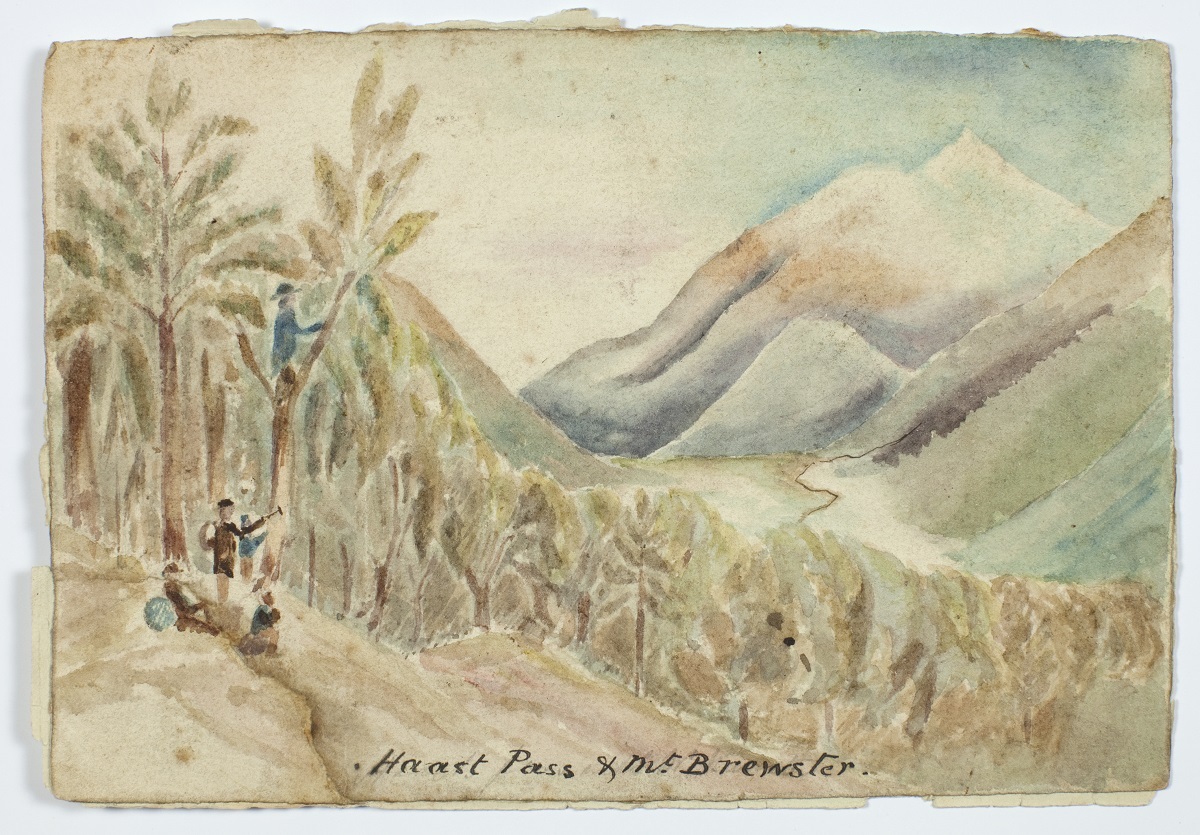
“No. 1 will remind you of the first discovery of the Haast Pass, the stream that we were following coming out of the little ravine on the right and in the middle of the pass the broad level pass. In the distance the snowy ranges of Mt Brewster and all their waters draining to the West Coast. You see the Doctor’s [with hammer] excitement when I made a sketch from the top [of a tree] as he exclaimed ‘Well, that must be one of zee most remarkable passes in zee world’.”
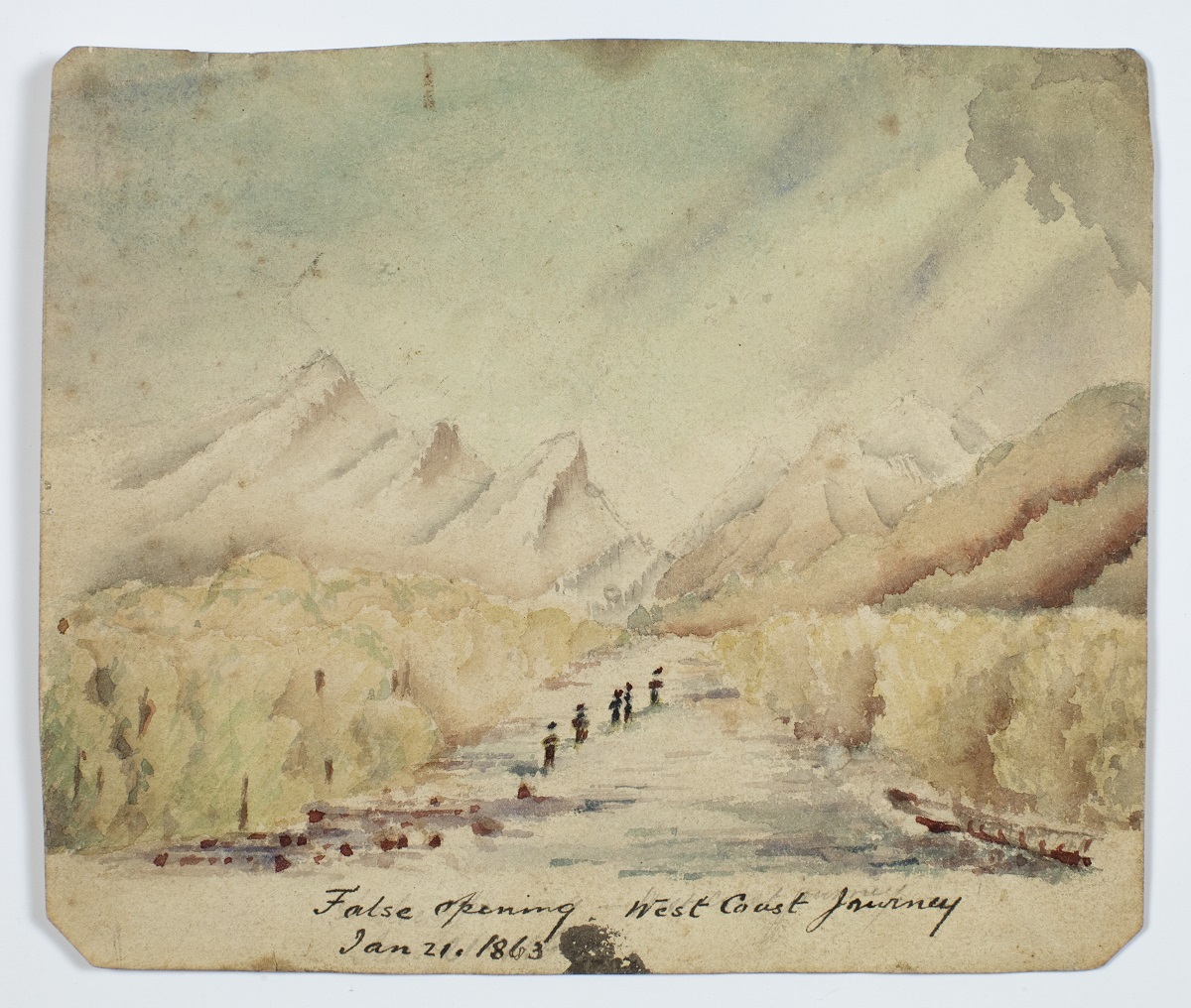
“No. 2 shows our party walking along a backwater of the Haast River, the main body being on the left, and our thinking the river flowed through the tremendous gorge ahead; instead of which it turned sharp to the right round the right hand hill, and soon gave us a view of the distant ocean.”
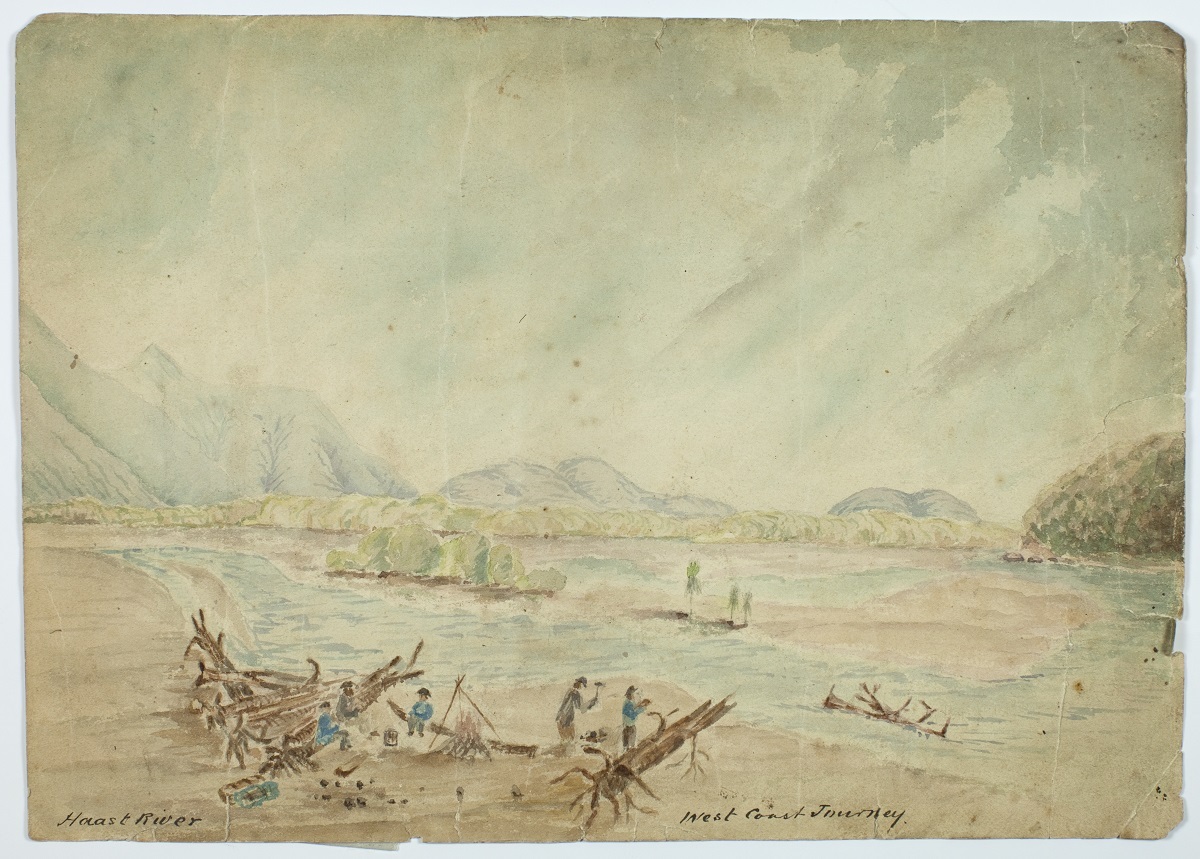
“No. 3 shows boiling our billy; the doctor geologising, me taking a sketch, and yourself, Holmes and Charlie congratulating yourselves that we were getting out of the everlasting mountains and into something like a level bit of country. We had a heavy scramble over the Bluff to the right, and from thence first saw the coveted salt sea.”
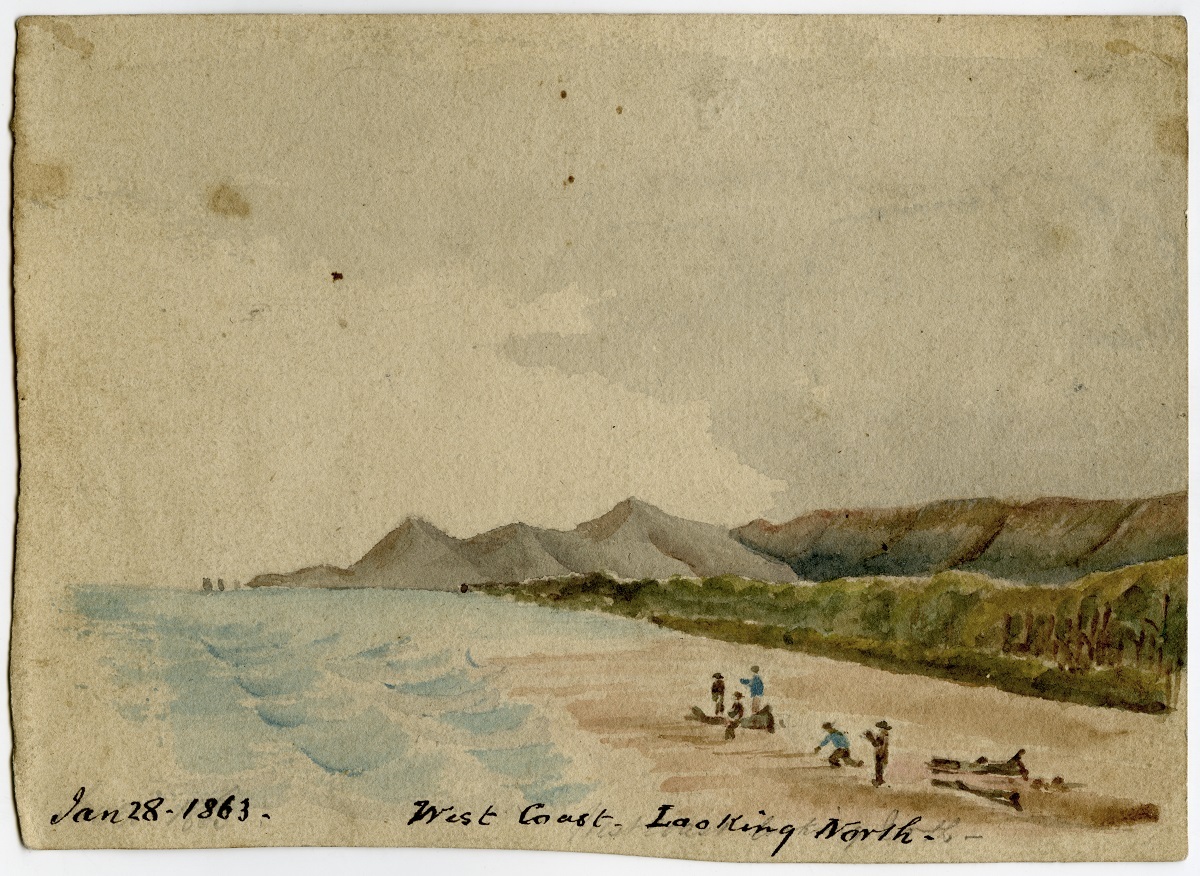
“No. 4, arrival on the Coast, not a soul to be seen, or a Maori foot print. (I cannot find the view looking south, with all of us in the breakers giving three cheers….).”
The dates given on the paintings are incorrect, which is odd given that Young said that he made them during the journey. Young gives the party’s arrival on the beach at Haast River mouth as 28 January but both Warner and Haast’s account give the date as 20 February. A possible explanation is that Young coloured his sketches and added the dates sometime later.
Haast named the Young Range and Young River near Makarora after his surveyor friend. He also asked the botanist Dr Hooker to name some of the undescribed plants he’d collected after Young and as a result there are four New Zealand plants with the species name youngii.





